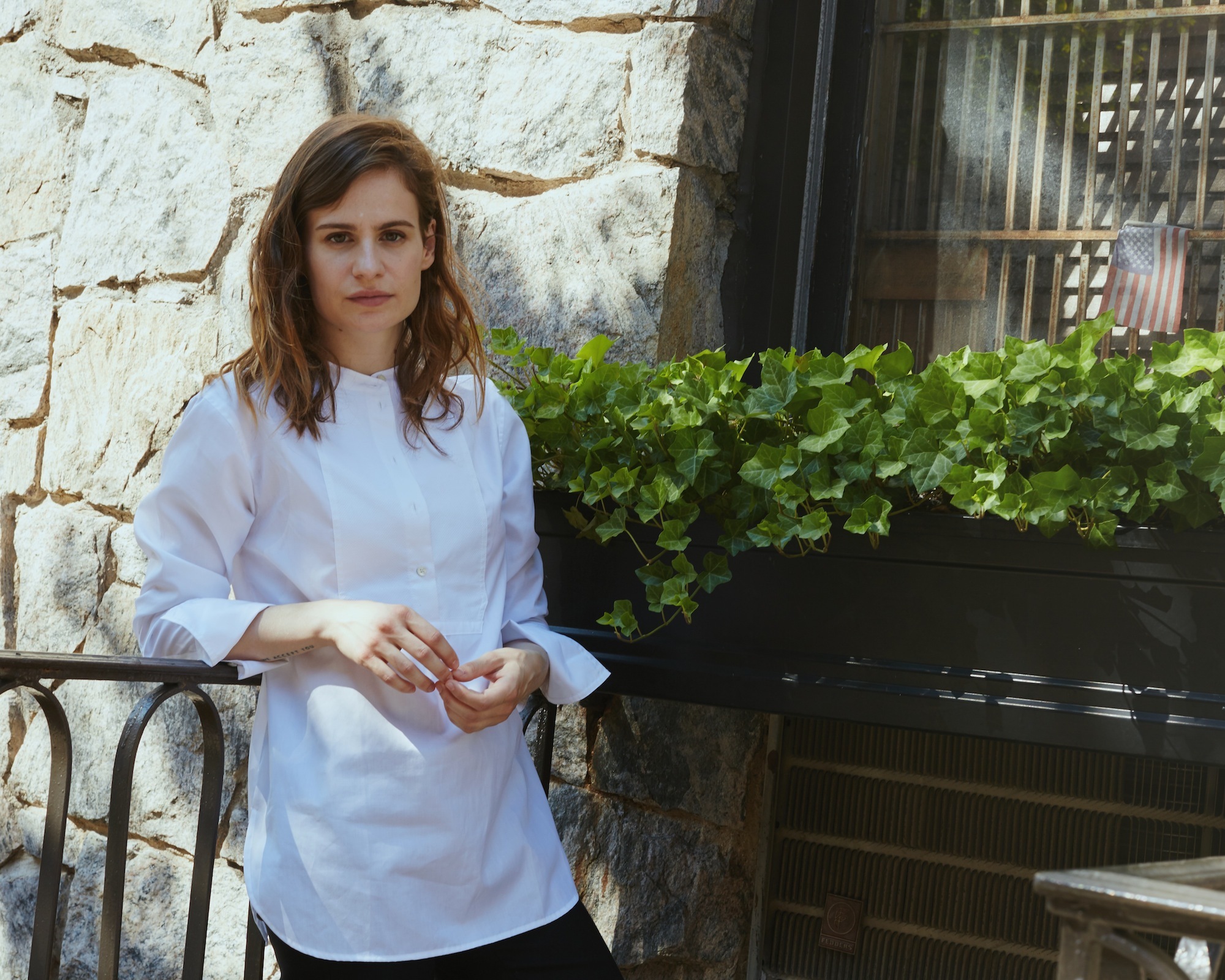“Sorry, I had to stop and have a burger,” the French singer Christine, 27, of Christine and the Queens tells me when she arrives a few minutes late. For a New York heat wave summer afternoon, she’s wearing a long-sleeved collarless shirt and black trousers, with sneakers. She seems cool, though, with wild eyes and brown hair. As we walk to a nearby diner, I page through my notebook, a last minute review of messy research. I see the following: “Simone de Beauvoir / Michael Jackson / Parisian / Patti Smith.” It makes sense now that I’ve met Christine.
Actually, I’m not sure if her name is Christine at all, only that seems to be what everyone calls her. I have written in my notes that her real name is Héloïse Letissier.
Once we’ve settled into a booth, she explains to me that Christine comes from a kind of alter ego-an energy-a stage version of herself, free and unafraid. And, she’s contagious. Fans send mail with stories that begin, “My Christine made me…”
Hugely popular and already acclaimed in France, this Christine is just gaining momentum in the States. She slayed the crowd at The Box this week in a performance drenched in glitter. Still, it’s been a fast rise for someone who started making music not too long ago.
It was in 2010, recovering from sadness and heartbreak, that Christine met the three maternal drag queens referenced in her stage name. “I’d go out every night with my Time Out searching for parties-weird parties, queer parties- to get this energy,” she says of being in London and fatefully ending up at Madame Jojo’s cabaret for a show. That evening, Christine watched three ladies make rock n’ roll and cook at the same time (“It was a bit awkward,” she laughs.) Then, the Queens quickly noticed Christine in the audience and took her under their care. They checked on her to make sure she was eating and sleeping, and it was they who, after hearing her sing along to a song on the radio, pushed her to start making music.

Before decamping to London, Christine had been studying theater, in particular, stage direction. She loved to write plays that were more movement than dialogue, creating a kind of studied choreography. Unsurprisingly, she’s been dancing since she was a child. “I hated my voice; I still do,” she says of taking up singing so late in her artistic career. Her fans would argue otherwise. She’s been a success in France since posting a few videos of her songs to an online contest by French magazine Les Inrockuptibles. Madonna, Lorde, and Mark Ronson have all spoken about their admiration for her work.
I ask Christine about the concept of fluidity, something I’ve been thinking a lot about lately in regard to media, and, of course, gender. It’s notable here, because Christine was not always a singer and, even now, seems to defy such a simple categorization with her songwriting and dance moves. She cites choreographers like Pina Bausch and Anne Teresa de Keersmaeker as key influences.
“It’s not even about thinking; it’s about feeling,” she says. “It’s how I always seemed in the world and made things. I never chose between disciplines or gender. I don’t like to choose. I feel things are stronger and more desirable if they can possibly change and shift.” As she says this, Christine props her arms on the table and I see a tattoo that reads, “We accept you.”
Later, back at my desk, I come across something interesting. Come November, Christine will be playing a show at Webster Hall and Terminal 5 with Marina & the Diamonds. Turns out, Marina’s Diamonds are also an imaginary collective.” Both artists “share” billing with conceptual band members, perhaps another example of fluidity. Except, this time it’s the ability to choose your own ever evolving “family.”
Credits
Text Stephanie LaCava
Photography by Kathy Lo
